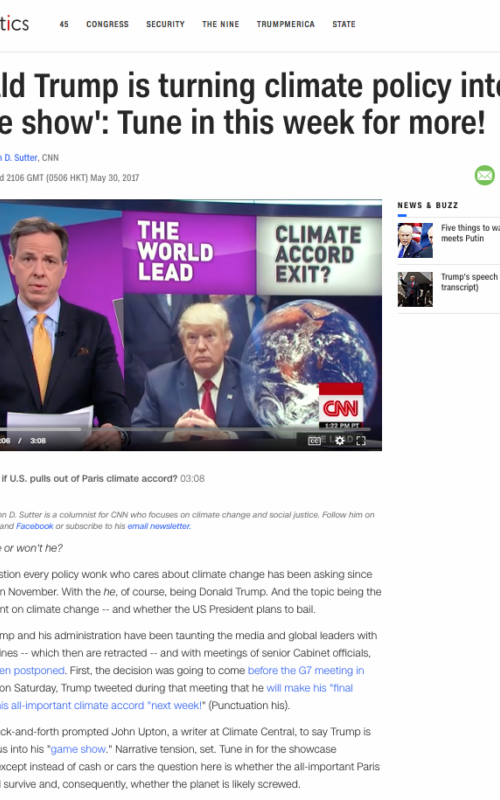Media coverage
Share

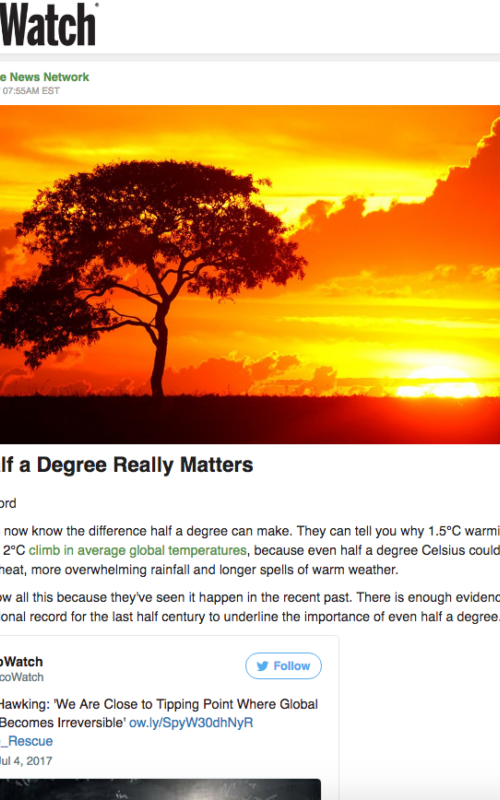
EcoWatch
Researchers now know the difference half a degree can make. They can tell you why 1.5°C warming would be better than a 2°C climb in average global temperatures, because even half a degree Celsius could mean greater extremes of heat, more overwhelming rainfall and longer spells of warm weather.
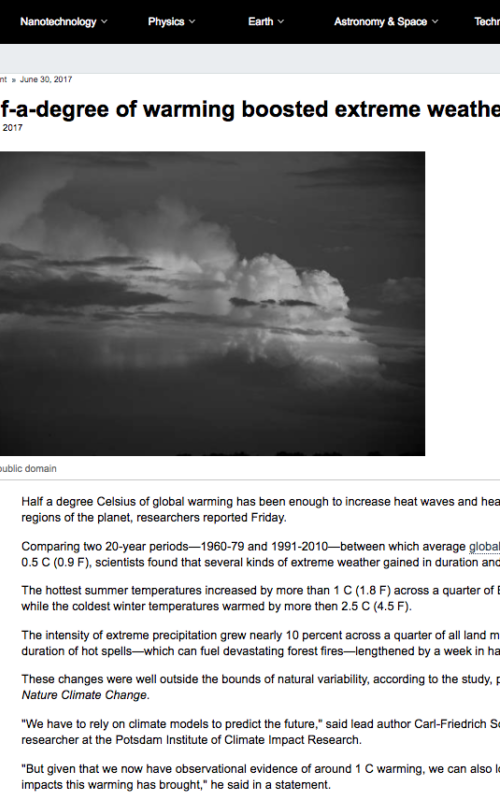
Phys Org via AFP
Half a degree Celsius of global warming has been enough to increase heat waves and heavy rains in many regions of the planet, researchers reported Friday.
Comparing two 20-year periods—1960-79 and 1991-2010—between which average global temperatures jumped 0.5 C (0.9 F), scientists found that several kinds of extreme weather gained in duration and intensity.
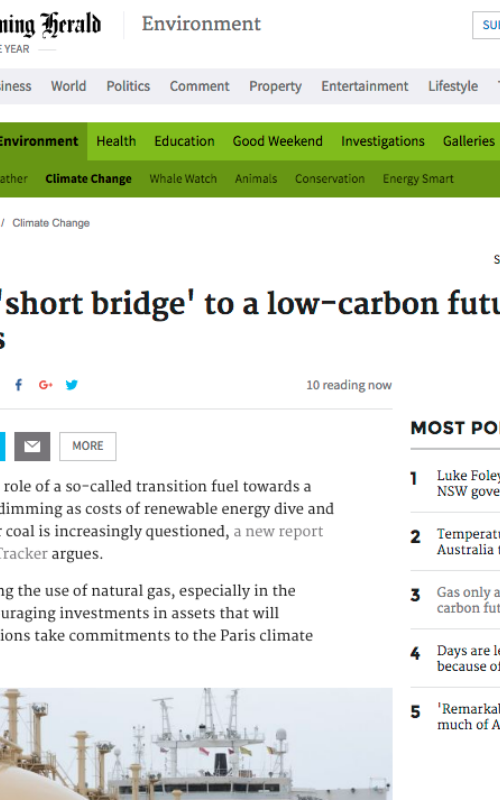
The Sydney Morning Herald
Hopes gas will play the role of a so-called transition fuel towards a low-carbon future are dimming as costs of renewable energy dive and its emissions edge over coal is increasingly questioned, a new report by the Climate Action Tracker argues.
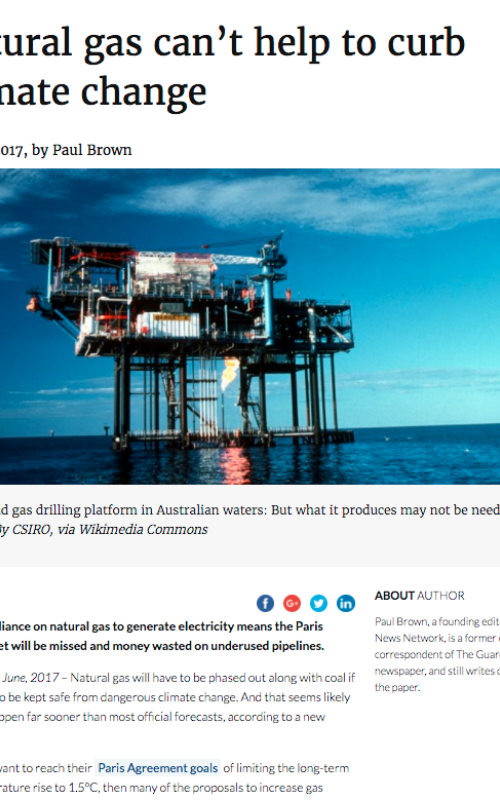
Climate News Network
Natural gas will have to be phased out along with coal if the world is to be kept safe from dangerous climate change. And that seems likely to have to happen far sooner than most official forecasts, according to a new report.If countries want to reach their Paris Agreement goals of limiting the long-term world temperature rise to 1.5°C, then many of the proposals to increase gas production and distribution will be unnecessary. New terminals and pipelines will never be fully used and will become stranded assets.

The Guardian
A history of failure has left Australia with virtually no genuinely independent advice on climate change. With comments from Climate Analytics' CEO Bill Hare on the recommendations of the Finkel Review.
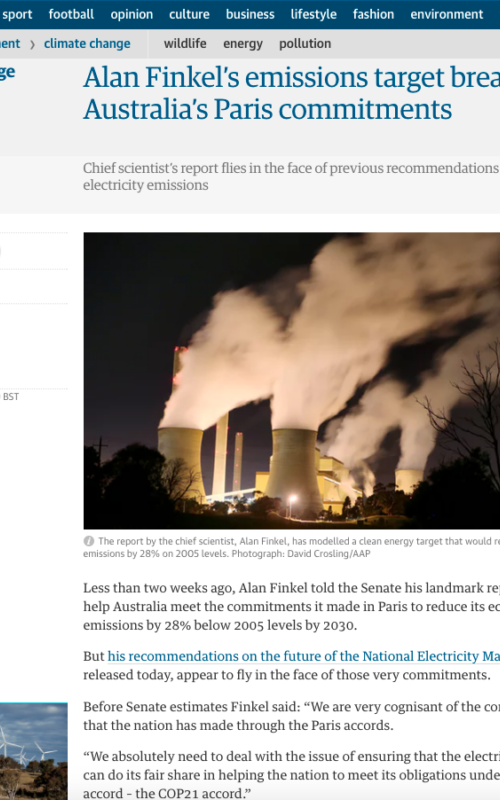
The Guardian
Less than two weeks ago, Alan Finkel told the Australian Senate his landmark report would help Australia meet the commitments it made in Paris to reduce its economy-wide emissions by 28% below 2005 levels by 2030. But his recommendations on the future of the National Electricity Market, released today, appear to fly in the face of those very commitments.
With comments from Climate Analytics' Bill Hare.
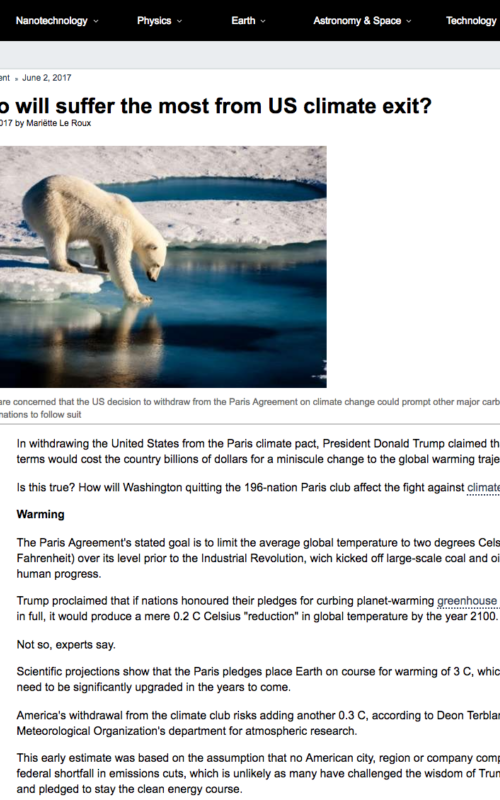
Phys Org
In withdrawing the United States from the Paris climate pact, President Donald Trump claimed that honouring its terms would cost the country billions of dollars for a miniscule change to the global warming trajectory.
Is this true? How will Washington quitting the 196-nation Paris club affect the fight against climate change? Quoting Climate Analytics' Bill Hare.

Scientific American
A detailed analysis shows how much more CO2 each of Trump’s climate policy changes would send into the atmosphere. “This amounts to a very significant reversal of the downward trajectory that U.S. emissions have been on,” explains Bill Hare, one of the report authors and CEO of Climate Analytics, a nonprofit climate science and policy institute. “Under Trump's policies the U.S. will fall far short of its Paris climate goals.”
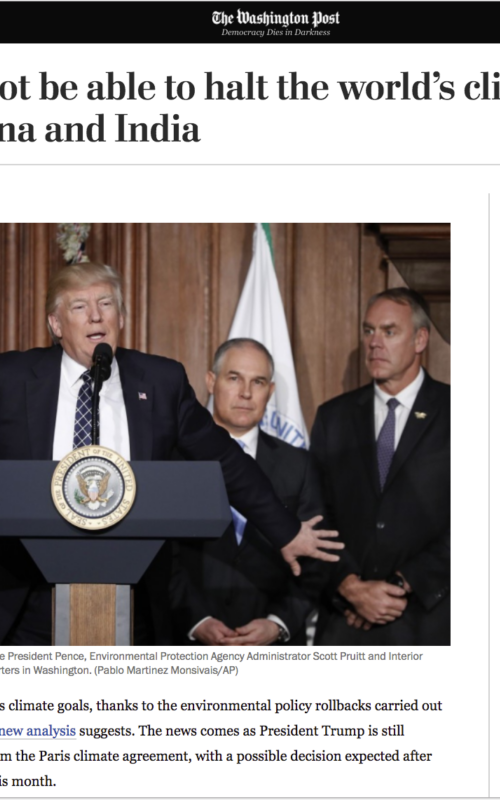
The Washington Post
President Trump’s decision Thursday to withdraw the United States from the Paris climate agreement could make it difficult, if not impossible, for the world to stay on track to reach an internationally agreed-upon goal for limiting dangerous global warming, scientists said. With comments from Climate Analytics CEO Bill Hare.
